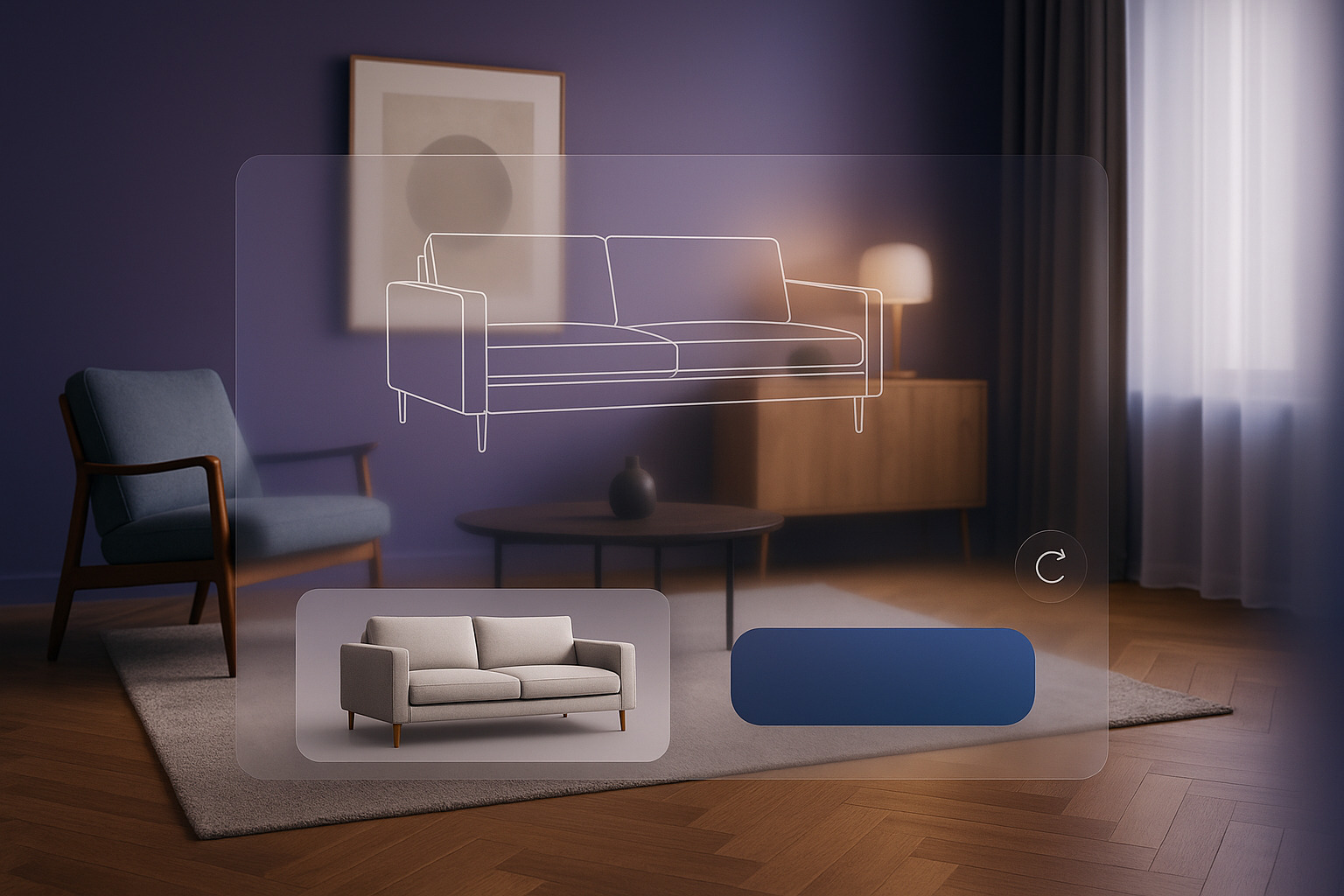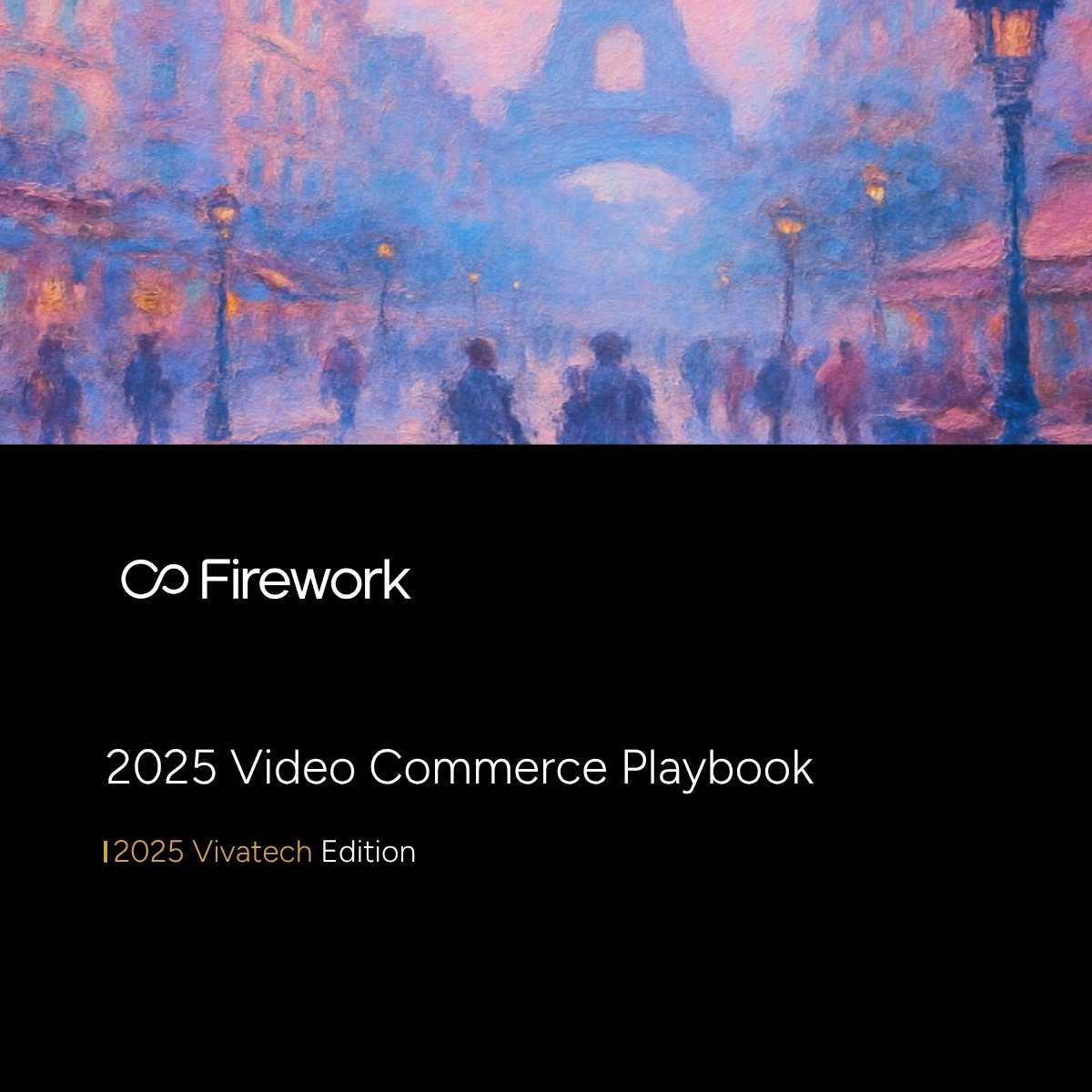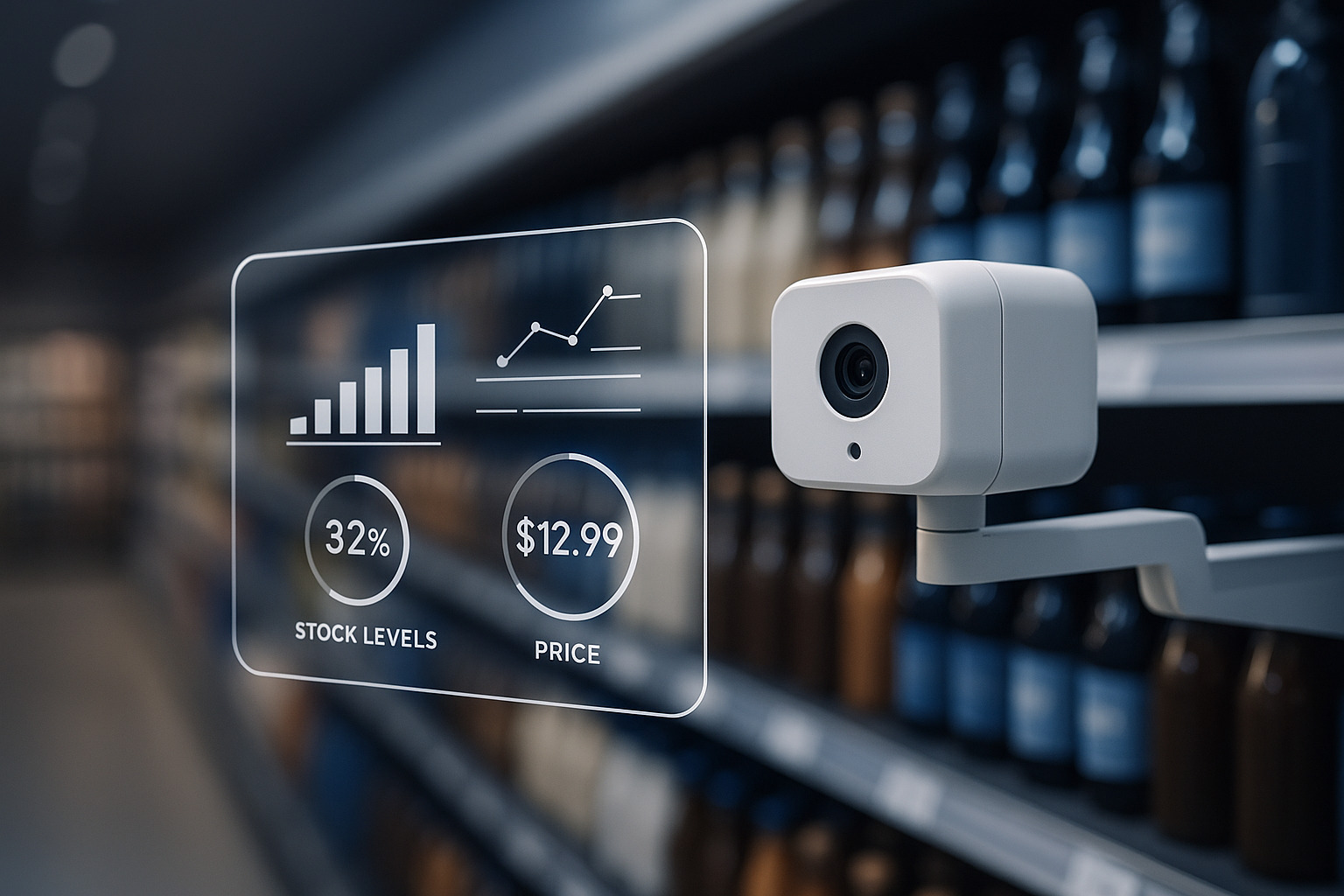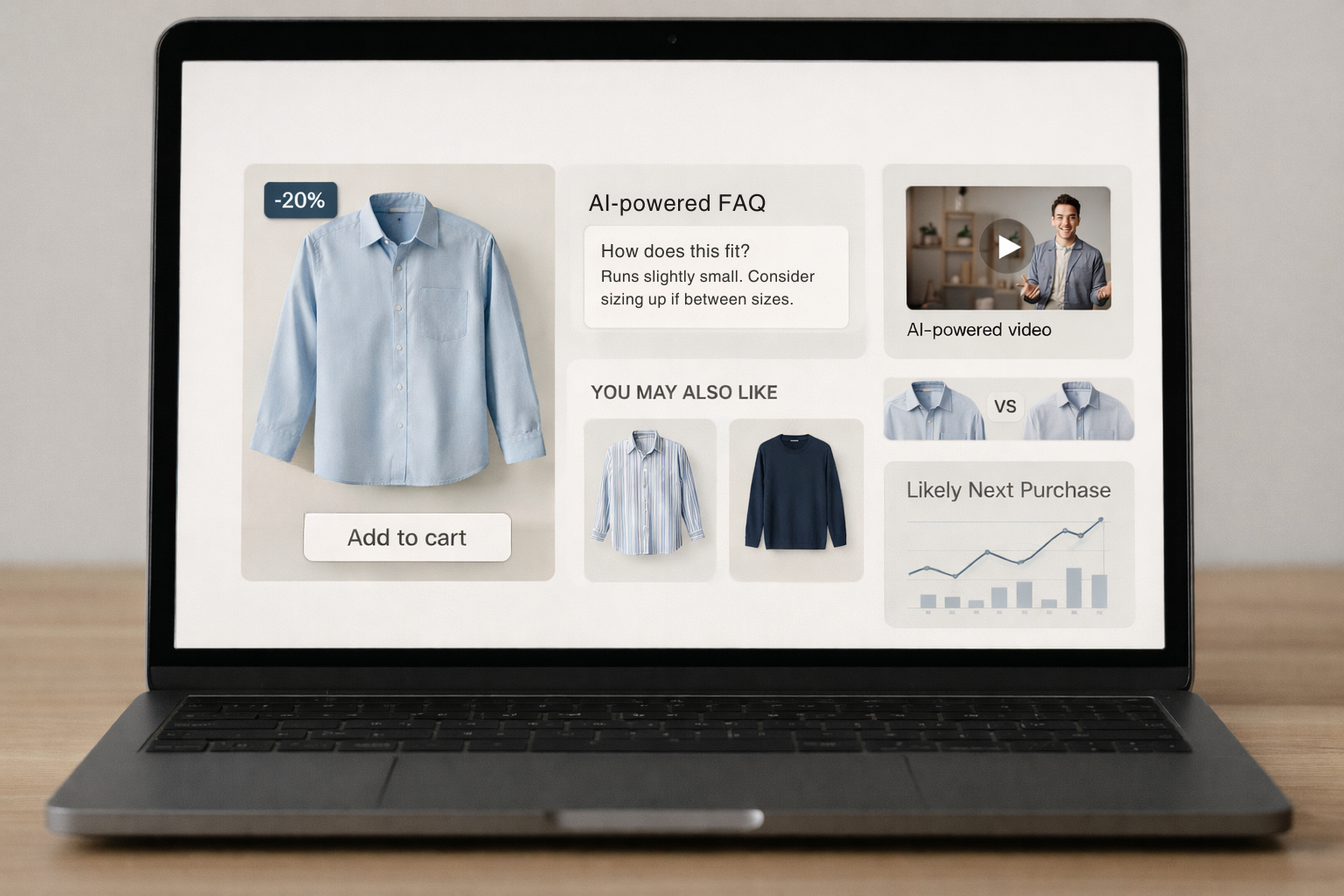It is no longer new that AI is here to stay and rewriting the rules. Over 40% of retailers have already deployed AI systems, with adoption expected to reach 80% in 2025, and early adopters seeing strong returns with an average 41% ROI on their AI investments.
It has also transformed how retail teams plan, price, and present their products. By offering personalized experiences, retailers can significantly enhance customer satisfaction and loyalty. This focus on personalization not only meets shoppers' expectations but also provides a strong competitive edge in an increasingly crowded market.
Transform your customer experience with seven key AI applications: sentiment analysis, automated merchandising, voice commerce, cashierless checkout, sustainability forecasting, returns automation, and AR/VR shopping. The following sections reveal how leading brands implement these technologies and the tangible benefits they deliver.
1. Customer Sentiment Analysis & Feedback Mining
Natural language processing analyzes reviews, social media, and support conversations in real-time, categorizing sentiment and connecting emotions to specific product features.
Sephora leverages this technology to transform millions of ratings into product development insights and personalized marketing, making every customer interaction more relevant.
The impact is substantial: high-sentiment positive reviews can boost conversion rates by 53%. Nearly 30% of shoppers will abandon a retailer if concerns go unaddressed.
Implementation:
- Connect social, review, and ticket data to a text analytics platform linked with your CRM
- Create sentiment threshold alerts for immediate response
- Hold weekly cross-functional meetings to assign actions
This transforms customer emotion into a decision engine that builds loyalty and aligns products with actual customer needs.
2. Automated Merchandising & Shelf Management
Empty shelves mean missed sales. Computer vision and AI monitor aisles continuously, identifying SKUs, comparing to planograms, and flagging issues instantly. These systems predict stockouts, creating automatic replenishment tasks before customers notice.
Retailers using Trax's smart shelf technology receive real-time alerts about out-of-stocks, pricing errors, and inventory gaps. The computer vision system helps retailers optimize shelf conditions, improve product availability, and reduce lost sales through automated monitoring and actionable insights.
Implementation: Begin with cameras in high-traffic sections where stockouts hurt most. Connect the vision feed to your POS and inventory systems for immediate staff alerts. Later, add predictive ordering and dynamic planograms based on demand.
Results appear quickly: fewer empty spaces, faster inventory turns, and increased sales per square foot, without additional staff.
3. Voice Commerce & Conversational AI Shopping
Voice commerce transforms shopping into a conversation. With billions of voice assistants worldwide, it's becoming essential for seamless retail experiences.
Customers can request "running shoes under eighty dollars" or reorder essentials hands-free. Retailers connecting voice APIs enable product searches, inventory checks, and secure payments in one conversation.
Major brands recognized this early. Walmart Voice Order links Google Assistant to their catalog, shoppers say "add milk" and see their preferred brand appear, boosting loyalty. Amazon and Shopify merchants use similar systems.
Benefits include larger basket sizes through personalized recommendations and expanded accessibility. Conversational bots resolve post-purchase questions faster, reducing support costs.
Implementation: Start by mapping FAQs into intents and training your model on product data. Add voice biometrics for security, then test different call-to-action phrases to optimize conversion.

4. AI-Enabled Checkout & Cashierless Stores
Picture walking into a store, grabbing items, and simply leaving. Overhead cameras and sensors track selections while payment happens automatically. This frictionless experience is a reality in checkout-free formats pioneered by Amazon Go and companies like AiFi, building virtual carts in real-time.
Traditional retailers are adapting too. Lush equipped registers with Google Cloud Vision, and staff can hold products up to the cameras for instant recognition. Holiday lines now process in minutes, not hours.
Stores using these systems often report higher conversion. Benefits include reduced labor costs, staff redeployment to sales roles, real-time inventory tracking, and improved loss prevention.
Implementation: Start in high-traffic areas. Use edge computing with on-site cameras, then integrate with your POS. Roll out gradually to fine-tune before full deployment.
5. AI for Sustainability & Waste Reduction
Excessive inventory damages both profits and the planet. AI forecast models analyze sales history, weather patterns, and local events to precisely match supply with demand, preventing waste and markdowns.
These models adapt daily, increasing beverage orders during heatwaves or reducing bakery production when school traffic drops, maintaining leaner inventory while meeting customer needs.
Automated inventory management significantly reduces overstocks, with studies showing up to a 29% reduction in overstock situations and 12% lower overall inventory costs.
Implementation: It requires a cross-functional team of merchants and data scientists testing models on perishable items. Track waste and sell-through, then expand successful approaches across categories for meaningful environmental and financial impact.
6. Automated Returns Processing & Reverse Logistics
Returns cost money and create chaos. AI transforms this through computer vision that inspects items upon arrival. High-resolution cameras check for damage while matching against policy rules, significantly reducing manual inspections.
The system grades items and triggers appropriate actions instantly: refund, refurbishment, liquidation, or restocking. Amazon's "keep it" refunds exemplify this approach; algorithms determine when it's cheaper to refund without return shipping.
Benefits include reduced handling costs, faster processing, improved customer satisfaction, driving loyalty and repeat purchases, and more profitable product routing.
Implementation: It requires connecting warehouse systems to vision models using historical returns data. Set confidence thresholds for human review of complex cases, then share insights with design teams to address recurring issues, transforming your returns center from a cost center to an intelligence hub.
7. Augmented Reality (AR) & Virtual Reality (VR) Shopping Experiences
Your customers want to try before buying, but they're shopping from home. AR and VR bridge this gap by letting shoppers see products in their actual environment before deciding to purchase.
Three applications deliver the biggest impact:
- Virtual try-ons use computer vision to place cosmetics, eyewear, or clothing onto live selfies, removing the guesswork of fit and color matching.
- Room visualization positions furniture in actual living spaces through smartphone cameras, replacing measurement anxiety with confident purchasing.
- Interactive virtual stores turn browsing into an immersive journey that keeps customers engaged much longer than standard product grids.
Sephora's Virtual Artist shows the business value, customers test hundreds of shades, see how each works with their skin tone, and buy with confidence. The outcome? Fewer returns, higher satisfaction ratings, and customers who spend more time in-app.
Implementation: Begin with a solid 3D asset pipeline since detailed models and realistic textures matter more than expected. Then integrate AR features directly into your ecommerce platform for quick mobile loading. With these foundations, you'll turn hesitation into immediate purchases while positioning your brand ahead of competitors still using static product images.
Turning Innovation into Competitive Advantage
These seven AI applications deliver proven ROI across the customer journey. Retailers using these technologies report significant improvements in customer retention and purchase rates, with smart merchandising potentially generating billions in value.
With retailers already leveraging machine learning, staying competitive requires execution, not experimentation.
Your deployment roadmap:
- Examine your tech stack for integration gaps
- Select two high-impact use cases affecting revenue or cost
- Assign clear metrics (conversion, labor savings, shrink reduction)
- Launch a 90-day pilot with weekly refinements
Ready to transform your customer experience? Firework's video commerce solution can improve your digital presence while delivering intelligent, always-on video engagement that today's consumers demand. Book a demo to get started today!
Unlock Exclusive Insights
By submitting this form, you agree to Firework's privacy policy and consent to receive personalized marketing communications. You can unsubscribe at any time.




























